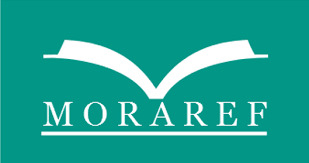Advancing Educational Practices: Implementation and Impact of Augmented Reality in Islamic History Learning
DOI:
https://doi.org/10.24036/kjie.v9i1.189Keywords:
Learning media, augmented reality, Islamic cultural history, concrete learningAbstract
This study aims to develop an Augmented Reality-based learning tool for Islamic history education in high schools. This research and development (R&D) adopts a six-stage approach: analysis, design, development, implementation, and evaluation (ADDIE). The resulting product has undergone rigorous validation by three experts in Augmented Reality, animation, and Islamic history education. Furthermore, this Augmented Reality-based learning material was tested on 120 students in four high schools. Student responses were carefully collected through questionnaires and analyzed using SPSS software version 26.0. The results showed that all experts agreed that the Augmented Reality product was valid and suitable for use as a learning medium. There are seven advantages to using this medium in learning, namely: the material is easy to understand, the content is clearly presented, the visual design is attractive, it provides a realistic learning experience, the learning experience is enjoyable, the Augmented Reality medium is easy to use, and there is a strong desire to return to learning using Augmented Reality. The use of this Augmented Reality-based learning module has significantly changed the learning experience of students to more concrete, enjoyable results and provided them with new experiences in Islamic history. These findings emphasize the need to continue designing and developing various Augmented Reality-based resources to strengthen the teaching of Islamic cultural history.
References
Adeoye, M. A., Wirawan, K. A. S. I., Pradnyani, M. S. S., & Septiarini, N. I. (2024). Revolutionizing Education: Unleashing the Power of the ADDIE Model for Effective Teaching and Learning. JPI (Jurnal Pendidikan Indonesia), 13(1), 202–209. https://doi.org/10.23887/jpiundiksha.v13i1.68624
Adriani, D., Lubis, P., & Triono, M. (2020). Teaching Material Development of Educational Research Methodology with ADDIE Models. Proceedings of the The 3rd International Conference Community Research and Service Engagements, IC2RSE 2019, 4th December 2019, North Sumatra, Indonesia. https://doi.org/10.4108/eai.4-12-2019.2293793
Aghni, R. I. (2018). Fungsi Dan Jenis Media Pembelajaran Dalam Pembelajaran Akuntansi. Jurnal Pendidikan Akuntansi Indonesia, 16(1), 98–107. https://doi.org/10.21831/jpai.v16i1.20173
Agustiya, W. D., Amalia, S. N., & Wafa, K. (2024). Pengembangan Comic Book Berbasis Augmented Reality Materi Keragaman Budaya Indonesia Siswa Kelas IV UPT SDN Sentul 4 Kota Blitar. Pendas : Jurnal Ilmiah Pendidikan Dasar, 09(04), 182–194. https://doi.org/https://doi.org/10.23969/jp.v9i4.17296
Ahmad, M. Y., & Tambak, S. (2018). Penanaman Nilai-Nilai Pendidikan Akidah Melalui Mata Pelajaran Sejarah Kebudayaan Islam (SKI). Al-Hikmah: Jurnal Agama Dan Ilmu Pengetahuan, 15(1), 24–41. https://doi.org/10.25299/jaip.2018.vol15(1).1581
Aji, W. S. (2020). Perancangan Aplikasi Pengenalan Kendaraan Militer dengan Augmented Reality menggunakan Marker Based Tracking. Jurnal Teknologi Informasi, 6(1), 28–34. https://doi.org/10.52643/jti.v6i1.690
Alam, B. F. N. (2021). Penerapan Teknologi Augmented Reality pada Aplikasi Katalog Perumahan Berbasis Android. Nusantara of Engineering (NOE), 4(2), 122–127. https://doi.org/10.29407/noe.v4i2.16783
Andrea, R., Lailiyah, S., Agus, F., & Ramadiani. (2019). “Magic Boosed” an elementary school geometry textbook with marker-based augmented reality. Telkomnika (Telecommunication Computing Electronics and Control), 17(3), 1242–1249. https://doi.org/10.12928/TELKOMNIKA.v17i3.11559
Andriani, R., & Rasto, R. (2019). Motivasi belajar sebagai determinan hasil belajar siswa. Jurnal Pendidikan Manajemen Perkantoran, 4(1), 80. https://doi.org/10.17509/jpm.v4i1.14958
Arifitama, B., Syahputra, A., & Bintoro, K. B. Y. (2022). Analisis Perbandingan Efektifitas Metode Marker dan Markerless Tracking pada Objek Augmented Reality. Jurnal Integrasi, 14(1), 1–7. https://doi.org/10.30871/ji.v14i1.3985
Aripin, I., & Suryaningsih, Y. (2019). Pengembangan Media Pembelajaran Biologi Menggunakan Teknologi Augmented Reality (AR) Berbasis Android pada Konsep Sistem Saraf. Sainsmat : Jurnal Ilmiah Ilmu Pengetahuan Alam, 8(2), 47. https://doi.org/10.35580/sainsmat82107192019
Astriani, M. M., & Alfahnum, M. (2023). Pelatihan Pemanfaatan Augmented Reality Sebagai Media Pembelajaran Bagi Guru Madrasah Ibtidaiyah Al Ghifari. Media Abdimas, 3(2), 82–86. https://doi.org/10.37817/mediaabdimas.v3i2.2778
Azizeh, S. N. (2021). Metode Kisah dalam Meningkatkan Motivasi Belajar dan Kemampuan Bercerita pada Pembelajaran Sejarah Kebudayaan Islam di Madrasah Ibtidaiyah. Al-Insyiroh: Jurnal Studi Keislaman, 7(1), 88–114. https://doi.org/10.35309/alinsyiroh.v7i1.4237
Azzahra, I. F., Devi, S., Falando, N., & Noviani, D. (2023). Melacak Sejarah Peradaban Islam. Social, Educational, Learning and Language (SELL), 1(2), 193–204. https://doi.org/https://doi.org/10.61930/sell.v1i2.42
Bernard, M., Sumarna, A., Rolina, R., & Akbar, P. (2019). Development of high school student work sheets using VBA for microsoft word trigonometry materials. Journal of Physics: Conference Series, 1315(1), 012031. https://doi.org/10.1088/1742-6596/1315/1/012031
Chlebusch, J., Köhler, I., & Stechert, C. (2020). Reasonable Application of Augmented Reality in Engineering Education. Proceedings of the Design Society: DESIGN Conference, 1, 1677–1686. https://doi.org/10.1017/dsd.2020.62
Damopolii, I., Febrianto Paiki, F., & Hendriek Nunaki, J. (2022). The Development of Comic Book as Marker of Augmented Reality to Raise Students’ Critical Thinking. TEM Journal, 11(1), 348–355. https://doi.org/10.18421/TEM111-44
Diaz, C., Hincapié, M., & Moreno, G. (2015). How the Type of Content in Educative Augmented Reality Application Affects the Learning Experience. Procedia Computer Science, 75, 205–212. https://doi.org/10.1016/j.procs.2015.12.239
Dita, P. (2022). Pentingnya Media Pembelajaran dalam Meningkatkan Prestasi Belajar. Early Childhood Islamic Education Journal, 3(01), 73–85. https://doi.org/10.58176/eciejournal.v3i01.679
Eldokhny, A. A., & Drwish, A. M. (2021). Effectiveness of Augmented Reality in Online Distance Learning at the Time of the COVID-19 Pandemic. International Journal of Emerging Technologies in Learning, 16(9), 198–218. https://doi.org/10.3991/ijet.v16i09.17895
Engkizar, E., Muliati, I., Rahman, R., & Alfurqan, A. (2018). The Importance of Integrating ICT Into Islamic Study Teaching and Learning Process. Khalifa: Journal of Islamic Education, 1(2), 148. https://doi.org/10.24036/kjie.v1i2.11
Fanny, A. M., & Suardiman, S. P. (2013). Pengembangan Multimedia Interaktif Untuk Mata Pelajaran Ilmu Pengetahuan Sosial (Ips) Sekolah Dasar Kelas V. Jurnal Prima Edukasia, 1(1), 1. https://doi.org/10.21831/jpe.v1i1.2311
Fauzi, M. (2017). Tokoh-Tokoh Pembaharuan Pendidikan Islam Di Mesir. Jurnal Tarbiyah, 24(2). https://doi.org/http://dx.doi.org/10.30829/tar.v24i2.213
Febriani, A., Sindi, N. F., Amanda, L. G., Rahman, R. A., & Putri, A. R. (2022). Seven Steps of the Implementation of Mind Mapping Method in Learning of Islamic Education. Khalifa: Journal of Islamic Education, 6(1), 24. https://doi.org/10.24036/kjie.v6i1.194
Fricke, A., Döllner, J., Asche, H., & Isaac, F. (2023). Optimising a Virtual 3D City Model for Citizen-Based Urban Development in East Jerusalem. In G. O., M. B., S. F., R. A.M.A.C., G. C., K. Y., & T. C.M. (Eds.), Lecture Notes in Computer Science (including subseries Lecture Notes in Artificial Intelligence and Lecture Notes in Bioinformatics): Vol. 14107 LNCS (pp. 521–535). Springer Science and Business Media Deutschland GmbH. https://doi.org/10.1007/978-3-031-37114-1_36
Goh, E. S., Sunar, M. S., & Ismail, A. W. (2019). 3D Object Manipulation Techniques in Handheld Mobile Augmented Reality Interface: A Review. IEEE Access, 7, 40581–40601. https://doi.org/10.1109/ACCESS.2019.2906394
Grasset, R., Dunser, A., & Billinghurst, M. (2008). The design of a mixed-reality book: Is it still a real book? 2008 7th IEEE/ACM International Symposium on Mixed and Augmented Reality, 99–102. https://doi.org/10.1109/ISMAR.2008.4637333
Haryadi, R., & Selviani, F. (2021). Problematika Pembelajaran Daring di Masa Pandemi COVID-19. Academy of Education Journal, 12(2), 254–261. https://doi.org/10.47200/aoej.v12i2.447
Hasmar, A. H. (2020). Problematika Pembelajaran Sejarah Kebudayaan Islam Di Madrasah. Jurnal MUDARRISUNA: Media Kajian Pendidikan Agama Islam, 10(1), 15. https://doi.org/10.22373/jm.v10i1.6789
Hilipito, M. A. K., Sugiarso, B. A., & Mamahit, D. J. (2023). Pengaruh Penggunaan Media Augmented Reality Assemblr Edu dalam Meningkatkan Minat Belajar Siswa SMP. Jurnal Penelitian, Pendidikan Dan Pengajaran: JPPP, 4(3), 35–42. https://doi.org/10.30596/jppp.v4i3.16429
Kaliraj, P., & Devi, T. (2021). Innovating with Augmented Reality. In Innovating with Augmented Reality (1st Editio). Auerbach Publications. https://doi.org/10.1201/9781003175896
Karmila, S., & Alfaridho, L. A. (2021). Perancangan Aplikasi Pembelajaran Interaktif Berbasis Augmented Reality Pada Modul Pembelajaran Teknik Digital. Jurnal Informatika Dan Komputasi: Media Bahasan, Analisa Dan Aplikasi, 15(01), 44–53. https://doi.org/10.56956/jiki.v15i01.82
Karo, T. K. (2020). Modernisasi Pendidikan Islam di Mesir. WARAQAT : Jurnal Ilmu-Ilmu Keislaman, 2(2), 24. https://doi.org/10.51590/waraqat.v2i2.60
Kurniawan, R., & Yudha Pradatama, R. (2021). Pembangunan Game 3D Real Time Strategy “Bug Invasion” Berbasis Desktop. Journal of Information Technology, 3(2), 28–42. https://doi.org/10.47292/joint.v3i2.61
Mahbuddin, A. N. G. (2020). Model Integrasi Media dan Teknologi dalam Pembelajaran PAI. Al-Mudarris (Jurnal Ilmiah Pendidikan Islam), 3(2), 183–196. https://doi.org/10.23971/mdr.v3i2.2312
Mardiana, P. D., Sabiruddin, S., Gustia, A. Y., Yenis, M., & Langputeh, S. (2022). Forms of Using the Internet to Support Student Activities in Online Classroom Learning in Higher Education. International Journal of Islamic Studies Higher Education, 1(1), 14–29. https://doi.org/10.24036/insight.v1i1.90
Masdaudi, F. R., & Jamrizal, J. (2023). Tantangan Dan Harapan Pembelajaran Jarak Jauh Di Masa Pandemi Covid 19. Jurnal Agroteknologi Pertanian & Publikasi Riset Ilmiah, 5(1), 54–66. https://doi.org/10.55542/jappri.v5i1.718
Muklim, M., Ruspa, A. R., & Nirwana, N. (2021). Pembelajaran Menyimak Cerpen Menggunakan Media Audio SMP Negeri 2 Kamanre Kabupaten Luwu. DEIKTIS: Jurnal Pendidikan Bahasa Dan Sastra, 1(2), 215–226. https://doi.org/10.53769/deiktis.v1i2.195
Mulyati, N. (2021). Analisis Kebijakan Pendidikan Terkait Implementasi Pembelajaran Jarak Jauh pada Masa Darurat Covid-19. Jurnal Sosial Teknologi, 1(9). https://doi.org/10.59188/jurnalsostech.v1i9.191
Nadiyah, R. S., & Faaizah, S. (2015). The Development of Online Project Based Collaborative Learning Using ADDIE Model. Procedia - Social and Behavioral Sciences, 195, 1803–1812. https://doi.org/10.1016/j.sbspro.2015.06.392
Nurrita, T. (2018). Pengembangan Media Pembelajaran Untuk Meningkatkan Hasil Belajar Siswa. MISYKAT: Jurnal Ilmu-Ilmu Al-Quran, Hadist, Syari’ah Dan Tarbiyah, 3(1), 171. https://doi.org/10.33511/misykat.v3n1.171
Prasetiawan, A. Y., & Ma’rifataini, L. (2020). Dimensi Ideologis Pendidikan Sejarah Islam padaMateri Sejarah Kebudayaan Islamdi Madrasah Aliyah. Jurnal SMART: Studi Masyarakat, Religi, Dan Tradisi, 6(2), 187–2. https://doi.org/https://doi.org/10.18784/smart.v6i2.1002
Preece, C., & Skandalis, A. (2024). Time to imagine an escape: investigating the consumer timework at play in augmented reality. European Journal of Marketing, 58(1), 92–118. https://doi.org/10.1108/EJM-09-2021-0695
Rahmi, U., & Azrul, A. (2021). Message Design of Printed and Digital Material to Meaningful Learning. Al-Ta Lim Journal, 28(1), 26–34. https://doi.org/10.15548/jt.v28i1.634
Rayanto, Y. H., & Sugianti. (2020). Penelitian Pengembangan Model ADDIE dan R2D2: Teori & Praktek. In Academic and Research Institute Publisher. Lembaga Academic & Research Institute. https://books.google.co.id/books?hl=id&lr=&id=pJHcDwAAQBAJ&oi=fnd&pg=PP1&dq=penelitian+pengembangan+ADDIE+&ots=ycnlUEtAEQ&sig=UbwTwgPLdPGWBk05yyYxSAXBSpA&redir_esc=y#v=onepage&q=penelitian pengembangan ADDIE&f=false
Rofik, R. (2015). Nilai Pembelajaran Sejarah Kebudayaan Islam dalam Kurikulum Madrasah. Jurnal Pendidikan Agama Islam, 12(1), 15–30. https://doi.org/10.14421/jpai.2015.121-02
Saca, A. (2021). Penerapan Marker-Based Augmented Reality Sebagai Media Pembelajaran Tata Surya. JIKA (Jurnal Informatika), 5(1), 33. https://doi.org/10.31000/jika.v5i1.3560
Saha, A., Ghosh, M., & Pal, S. C. (2022). Estimation of rainfall–runoff using SCS-CN method and GIS techniques in drought-prone area of Upper Kangsabati Watershed, India. Sustainable Water Resources Management, 8(5). https://doi.org/10.1007/s40899-022-00731-z
Santika, I. W. E. (2020). Pendidikan Karakter pada Pembelajaran Daring. Indonesian Values and Character Education Journal, 3(1), 8–19. https://doi.org/10.23887/ivcej.v3i1.27830
Sheng, X., Mao, S., Yan, Y., & Yang, X. (2024). Review on SLAM algorithms for Augmented Reality. Displays, 84, 102806. https://doi.org/10.1016/j.displa.2024.102806
Stojšić, I., Ivkov-Džigurski, A., Maričić, O., Stanisavljević, J., Milanković Jovanov, J., & Višnić, T. (2020). Students’ Attitudes toward the Application of Mobile Augmented Reality in Higher Education. Drustvena Istrazivanja, 29(4), 535–554. https://doi.org/10.5559/di.29.4.02
Syafril, R. S. (2019). Penerapan Sederhana Virtual Reality Dalam Presentasi Arsitektur. NALARs, 19(1), 29. https://doi.org/10.24853/nalars.19.1.29-40
Tuwu, D. (2020). Kebijakan Pemerintah dalam Penanganan Pandemi COVID-19. Journal Publicuho, 3(2), 267. https://doi.org/10.35817/jpu.v3i2.12535
Uliontang, U., Setyati, E., & Chandra, F. H. (2020). Pemanfaatan Augmented Reality Pada Media Pembelajaran Sejarah Tentang Benda-Benda Bersejarah Peninggalan Kerajaan Majapahit Di Trowulan Mojokerto. Teknika: Engineering and Sains Journal, 4(1), 19. https://doi.org/10.51804/tesj.v4i1.785.19-26
Windika, R., Prasetyo, N. A., & Alika, S. D. (2022). Penerapan Teknologi Augmented Reality Sebagai Media Pembelajaran Aksara Jawa Untuk Siswa Kelas 3 di SDN Jenang 01. JITCE (Journal of Information Technology and Computer Engineering), 6(02), 35–43. https://doi.org/10.25077/jitce.6.02.35-43.2022
Yeh, H. C., & Tseng, S. S. (2019). Using the ADDIE model to nurture the development of teachers’ CALL professional knowledge. Educational Technology and Society, 22(3), 88–100. https://doi.org/https://www.jstor.org/stable/26896712
Yengui, M. H., & Stechert, C. (2021). On The Activation of Students Through Augmented Reality Experiences. Proceedings of the Design Society, 1, 2307–2316. https://doi.org/10.1017/pds.2021.492
Yuliantika, S., Frasandi, R. N., Rahmatika, U., & Septiana, N. N. (2025). The influence of the flat shape spin wheel learning media on mathematics learning to improve conceptual understanding of phase B Students at Khaira Ummah Islamic Elementary School. Mitra PGMI: Jurnal Kependidikan MI, 11(2), 199–213. https://doi.org/10.46963/mpgmi.v11i2.3074
Yuliono, T., Sarwanto, & Rintayati, P. (2023). Pengaruh Penggunaan Media Augmented Reality Assemblr Edu dalam Meningkatkan Minat Belajar Siswa SMP. Jurnal Penelitian, Pendidikan Dan Pengajaran: JPPP, 4(3), 65–84. https://doi.org/10.30596/jppp.v4i3.16429
Zayyadi, A. (2020). Dinamika Modernisasi Hukum Islam: Tinjauan Historis dalam Pembacaan Mazhab Sociological Jurisprudence. Al-Manahij: Jurnal Kajian Hukum Islam, 14(1), 99–112. https://doi.org/10.24090/mnh.v14i1.1800
Zega, Y. K. (2022). Peran Guru PAK Memanfaatkan Media Pembelajaran Untuk Meningkatkan Kecerdasan Spiritual Peserta Didik. Jurnal Apokalupsis, 13(1), 70–92. https://doi.org/10.52849/apokalupsis.v13i1.41
Zou, D., Jong, M. S.-Y., Huang, X., Cheng, G., Hwang, G.-J., & Jiang, M. Y.-C. (2024). A systematic review of SVVR in language education in terms of the ADDIE model. Interactive Learning Environments, 32(10), 6672–6697. https://doi.org/10.1080/10494820.2023.2277747
Downloads
Published
How to Cite
Issue
Section
License
Copyright (c) 2025 Aina Almardiyah, Essalihy Khalid, Bayu Ramadhani Fajri; Quratul Akyuni

This work is licensed under a Creative Commons Attribution-ShareAlike 4.0 International License.











